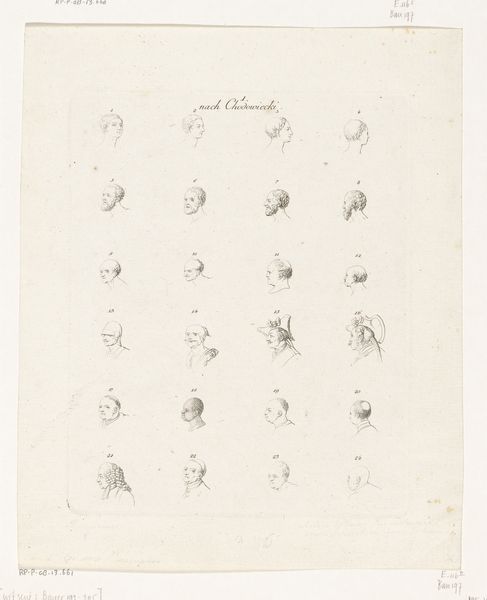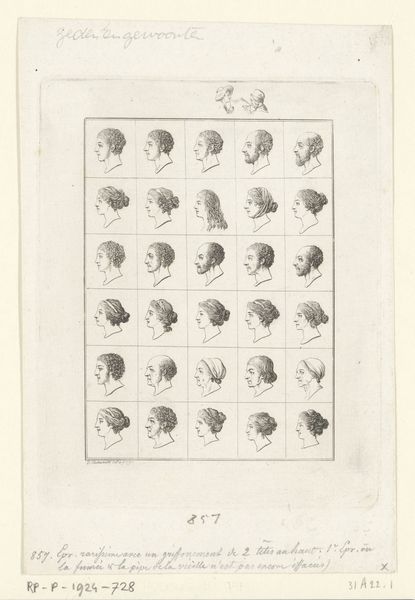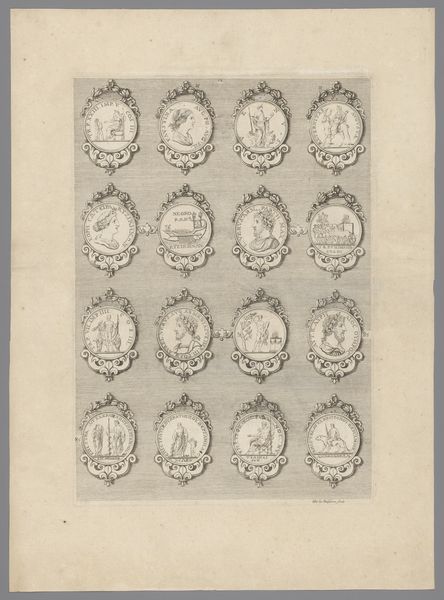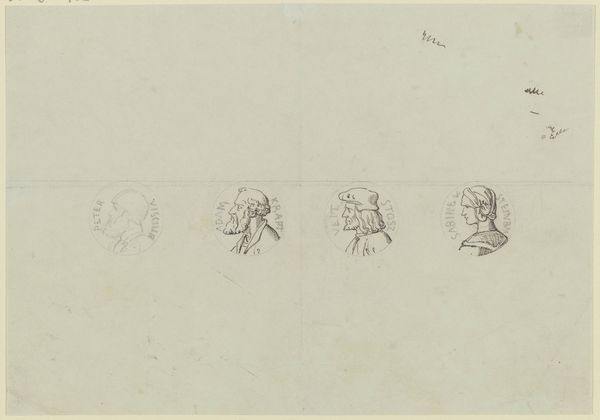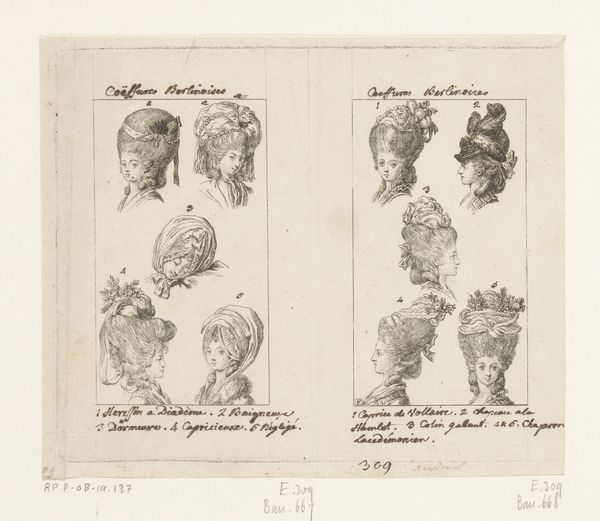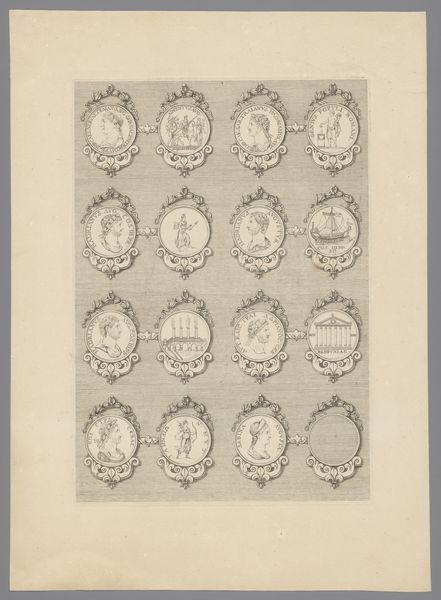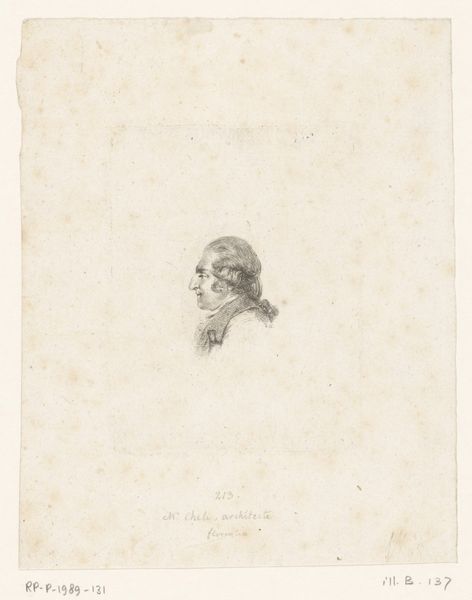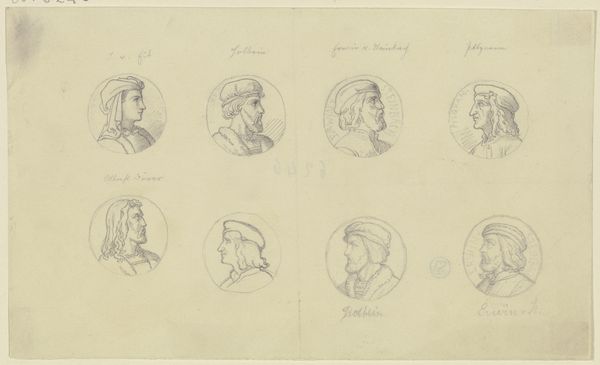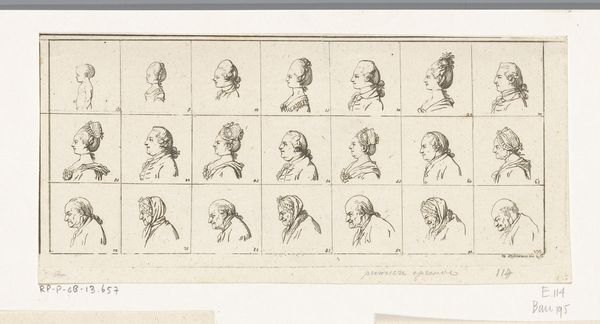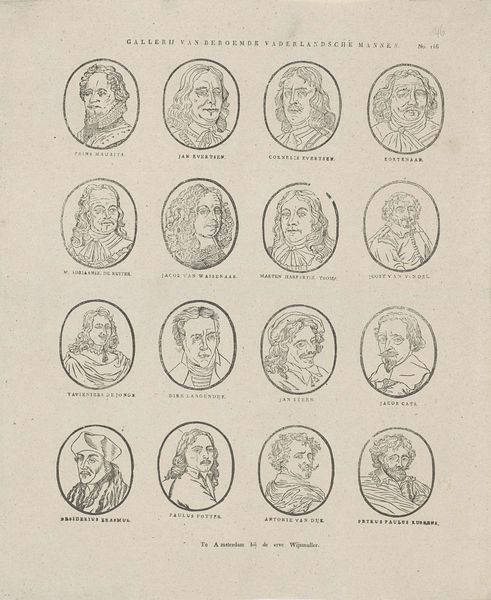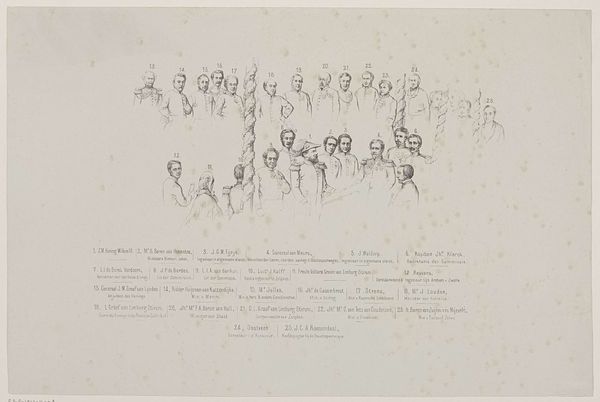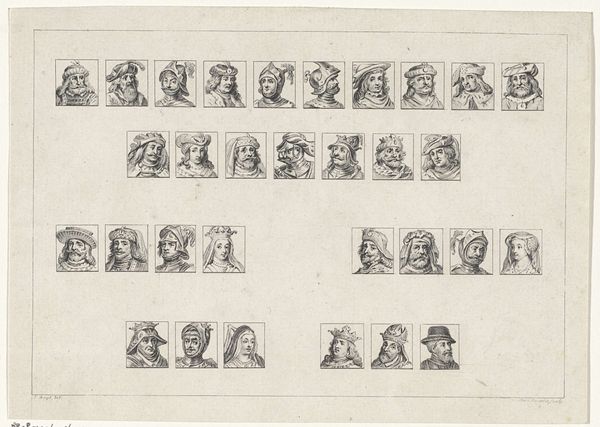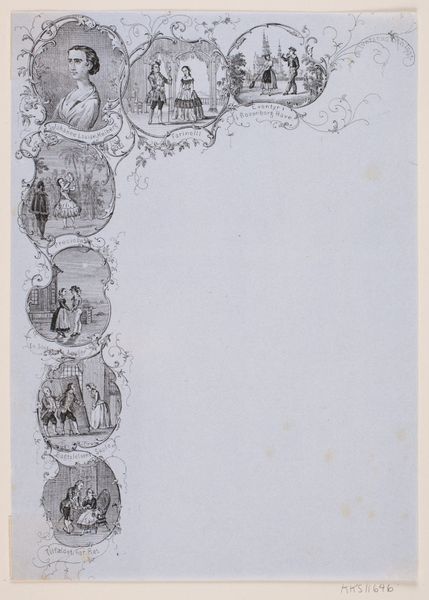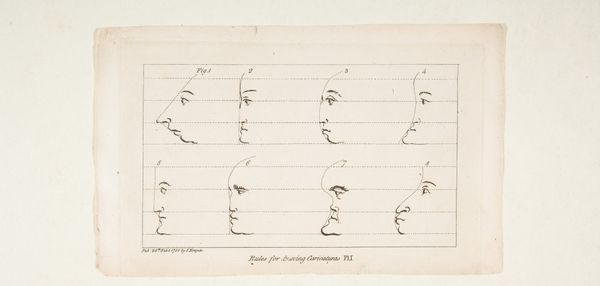
print, graphite, engraving
#
portrait
#
neoclacissism
# print
#
old engraving style
#
fading type
#
calligraphic
#
graphite
#
genre-painting
#
engraving
Dimensions: height 192 mm, width 154 mm
Copyright: Rijks Museum: Open Domain
Editor: This is *Vierentwintig koppen van mannen*, or *Twenty-Four Heads of Men*, a graphite and engraving print by Daniel Nikolaus Chodowiecki, created in 1774. The delicate lines give it a very classical feel. I’m struck by how uniform yet individual each face is. How do you interpret this work, given the social and historical context of the late 18th century? Curator: This piece resonates deeply when we consider the Enlightenment ideals that were taking hold. Chodowiecki, working in a period defined by reason and observation, presents us with what seems like a study in physiognomy. Are these ‘types’ reflective of societal roles and power dynamics, reinforcing class structures through visual representation? The numbered heads encourage us to categorise, to analyse—but on what basis? Editor: That's fascinating! So you’re suggesting it’s not just a neutral observation, but a commentary on how society classifies people? Curator: Exactly. The neoclassical style, with its emphasis on order and rationality, here intersects with potentially problematic social theories. Where do you think these presumed archetypes draw their authority? Editor: Perhaps from the existing social hierarchy. The piece subtly reinforces who holds power just by depicting them in a certain light? Curator: Precisely. And we need to question whose gaze is doing the depicting. Whose 'reason' are we seeing reflected? How might the identities of the subjects – their race, class, and social standing – play into how we view this grid of faces today? Editor: This really changes how I see the piece. I'll definitely be thinking about power structures when I look at art from this period. Curator: And about whose stories aren't being told, whose faces are missing from this very selective representation of the populace.
Comments
No comments
Be the first to comment and join the conversation on the ultimate creative platform.
